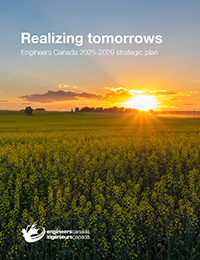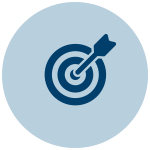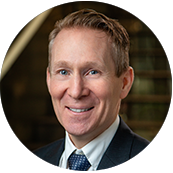
This document sets out Engineers Canada strategic priorities for 2025-2029 as we work to advance engineering through national collaboration.
Download a PDF
Click the download button to view of a PDF version of the 2025-2029 strategic plan.

Engineers Canada’s vision is to advance Canadian engineering through national collaboration.
On behalf of Canada’s engineering regulators, we provide expertise, services, and tools to help shape the direction and growth of the engineering profession in Canada, to establish consistent high standards, and to inspire public confidence. To fulfill this responsibility Engineers Canada works in ten main areas:
Accreditation: We evaluate and accredit undergraduate engineering programs at higher education institutions in Canada to ensure that graduates are academically qualified to be licensed as engineers.
Regulator collaboration: We facilitate and foster working relationships between and among the 12 provincial and territorial regulators on shared issues.
Support assessment, practice, and mobility in Canada: We develop national guidelines, papers, and tools that support regulators in fulfilling their mandates and enabling excellence in engineering practice.
National programs for engineers: We work with leading companies to provide engineers with insurance plans, financial services, travel deals, and more to support engineers at every stage of their career.
Public affairs and government relations: We initiate and maintain positive relations with the federal government policy-makers and advocate evidence-based, public-interest policy-making informed by the expertise of engineers.
Regulatory research: We monitor the regulatory and engineering landscape, sharing this strategic information with engineering regulators so that they can adapt to upcoming trends and mitigate risks.
International mobility: We work with regulators and international partners to facilitate the mobility of Canadian engineers wishing to practise abroad and of internationally trained engineers wishing to practise in Canada.
Outreach and public awareness: We promote the value of the engineering profession by fostering recognition of the value and contribution of the profession to society and sparking interest in the next generation of professionals.
Equity, diversity, and inclusion: We champion the transformation of the profession to ensure it is welcoming of people from all backgrounds and reflects the demographics of Canadian society.
Protection of engineering marks: We protects any word(s), mark, design, slogan, or logo, or any literary, or other work, as the case may be, pertaining to the engineering profession or to its objects.
We achieve this through the interplay of our Board Guiding Principles and organizational values. These weave through all aspects of our work and workplace culture, creating a trusting, open place where each person can contribute and thrive.

Engineers build solutions to the world’s most pressing challenges in pursuit of a safer, sustainable, and better future. Our strategic plan reflects how we will be contributing to realizing these tomorrows. Over the next five years, our strategic directions establish the key outcomes we wish to achieve with our partners and guide the course of Engineers Canada for the duration of this plan.
Realizing a stronger federation
Our success lies in our ability to quickly convene regulators and speak with a unified voice to respond to national issues.
As part of the 2022-2024 strategic plan, we reached a national agreement with all regulators on the desire for increased collaboration and regulatory harmonization. We will develop a process to identify, select, and implement collaboration and harmonization initiatives so that this work becomes part of our ongoing work with regulators.
As part of Engineers Canada’s ongoing commitment to good governance, it is timely to review our governance system, the current iteration of which was adopted in 2019. We will learn from leading governance practices and identify ways to enhance our governance framework and processes so that they are efficient and responsive to contemporary issues. We will examine how the Board’s composition, competencies, and reporting structure may better support the organization and those it serves. We will also examine voting procedures at Board and members’ meetings and consider our funding model as a contribution to a unified federation.

Aspirational outcomes:
Engineers Canada has efficient and trustworthy governance processes.
Engineering regulators benefit from collaboration and harmonization.
Engineering regulation is more consistent, efficient, and effective across Canada.
 Engineers Canada was founded in 1936—known at the time as the Dominion Council of Professional Engineers.
Engineers Canada was founded in 1936—known at the time as the Dominion Council of Professional Engineers.
The new organization was originally founded by Alberta, British Columbia, Manitoba, New Brunswick, Nova Scotia, Quebec, and Saskatchewan. The remaining regulators would join the organization in the subsequent years.
In 1959, the name was changed to the Canadian Council of Professional Engineers, and in 2007 became Engineers Canada.
Realizing accreditation and academic assessments
The Canadian Engineering Accreditation Board accredits Canadian engineering programs on behalf of regulators and at the request of higher education institutions (HEIs). Applicants who have a degree from an accredited engineering program meet the academic requirement for licensure for all Canadian engineering regulators. Graduates of other programs must demonstrate that their education meets the academic requirement to obtain their engineering license in Canada. Engineers Canada offers assessment tools to regulators to assist them in assessing applicants without an accredited degree.
The Canadian accreditation system was created in 1965. Since then, the landscape has dramatically changed: increasing numbers of applicants are coming from abroad, the number of engineering disciplines has surged, and the practice of engineering has become increasingly complex. While some modifications have been made to the accreditation system and to licensure assessment processes, major changes are necessary to adapt to changing educational contexts, the needs of the engineering profession, and to align the assessment processes between applicants from CEAB-accredited programs and those of other backgrounds. This evolution is necessary for engineering regulators to continue to meet public, governments’, and applicants’ expectations for a transparent, fair, and efficient assessment process for all who wish to become licensed to practise engineering in Canada.
During the 2022-2024 strategic plan, we conducted a fundamental review of the accreditation process. Regulators and interest holders collaborated on the development of a new national academic requirement for licensure and on updating the purpose of accreditation. A path forward report provided recommendations to the Engineers Canada
Board with direction for how those impacted could implement systems aligned with the new purpose of accreditation and corresponding national academic requirement for licensure.
As part of the 2025-2029 strategic plan, we will support regulators in implementing a new national academic requirement for licensure. We will also transition Engineers Canada’s associated tools as required. We will work with key interest holders to build an improved accreditation system that is flexible, adaptable, and valued by regulators, educators, students, and accreditation volunteers. In collaboration with regulators, we will develop a business case for a national intake and academic assessment process for internationally- educated applicants for licensure.

Aspirational outcomes:
Accreditation is valued by regulators, educators, students, and accreditation volunteers.
Regulators have trusted, efficient, inclusive, and proactive licensure systems that help them meet fairness requirements and maintain authority for licensure.
The academic assessment processes for CEAB graduates and non-CEAB applicants for licensure are more fairly aligned.
 In 2020, over 18,000 students graduated from a CEAB-accredited engineering program. In 2022, Canadian regulators licensed 10,979 new engineers. Sixty-seven per cent held a degree from a CEAB-accredited program while 33 per cent were internationally educated.
In 2020, over 18,000 students graduated from a CEAB-accredited engineering program. In 2022, Canadian regulators licensed 10,979 new engineers. Sixty-seven per cent held a degree from a CEAB-accredited program while 33 per cent were internationally educated.
Realizing our role in sustainability
Engineers are responsible for holding paramount the safety, health, and welfare of the public and the protection of the environment. Not only do engineers play a key role in sustainable development, they also protect public interest. Engineering regulators establish the standards and requirements that govern engineers and engineering practice, including those related to sustainable development.
The United Nations’ 17 Sustainable Development Goals (UNSDGs) have been referenced by, and integrated within, the International Engineering Alliance’s Graduate Attributes and Professional Competencies Framework. They also serve as a basis for the six Canadian Engineering Grand Challenges (CEGCs) 2020-2030 that were identified by Engineering Deans Canada.
Under the 2025-2029 strategic plan, we will work with regulators to define how we can best support them in environmental stewardship. We will investigate if we want to become carbon neutral and adopt an environmental, social, and governance (ESG) policy to guide our decision-making processes. We will also work with regulators to determine how Engineers Canada can support regulators in helping the profession to achieve the UNSDGs.

Aspirational outcome:
Engineers Canada has a defined role in environmental stewardship that complements regulators’ efforts.
 According to KPMG’s 2022 Survey of Sustainability Reporting, 94 per cent of Canadian companies report on their sustainability efforts with leading sectors being financial services, industrial, manufacturing and metals, and utilities. Of those who report, 45 per cent seek third- party assurance.
According to KPMG’s 2022 Survey of Sustainability Reporting, 94 per cent of Canadian companies report on their sustainability efforts with leading sectors being financial services, industrial, manufacturing and metals, and utilities. Of those who report, 45 per cent seek third- party assurance.
Realizing an inclusive profession
To remain dynamic and growing, the profession must ensure that engineering solutions serve an increasingly diverse client base. Engineers must also understand the impact of their practice on the various communities they served.
Engineers Canada has worked to advance women in the profession for over three decades. Since 2014, the 30 by 30 initiative has brought together voices from across the engineering community who are united in increasing the percentage of newly licensed engineers who are women to 30 per cent by 2030.
During the 2022-2024 strategic plan, we provided information to support regulators and our 30 by 30 network with the number of engineering graduates who proceed through the licensure process. We also shared information and facilitated information exchange for regulators, higher education institutions, and engineering employers. We hosted the annual 30 by 30 Conference, expanded our partnership with student federations and national associations in support of 30 by 30, and participated in several conferences and projects in support of the strategic priority, resulting in new tools and resources. We also completed an environmental scan, an evaluation of the first decade of 30 by 30 and began implementing recommendations of the report.
As part of the 2025-2029 strategic plan, we remain focused on changing the culture of engineering to make it more inclusive and increasing the representation of women in the profession. As we approach 2030, our continued collaborative approach will allow us to focus on the recruitment and retention of women and sustain momentum beyond 2030. To realize a truly inclusive engineering profession, we will embrace inclusion, diversity, equity, and accessibility (IDEA), recognizing the intersectionality of these identities. We will partner with organizations and regulators to establish our role in moving IDEA forward in engineering. And we will ourselves endeavour to become an IDEA employer of excellence.
We will provide national support and leadership to advance truth and reconciliation in the engineering profession. Under the guidance of our Indigenous Advisory Committee, we will take a culturally sensitive approach that sets a foundation for truth before reconciliation, further develop our partnerships, and provide training and resources to our staff and volunteers.

Aspirational outcome:
Engineering is a welcoming, inclusive profession that reflects Canadian society and has embraced truth and reconciliation.
 “Like any cultural trans-formation, there’s not a one-and-done formula. There are many levers that need to be pulled.”
“Like any cultural trans-formation, there’s not a one-and-done formula. There are many levers that need to be pulled.”
-Mia Mends, Global Chief Diversity, Equity, and Inclusion Officer and CEO of Impact Ventures at Sodexo North America.
Realizing a fuller awareness of engineers
Engineers adhere to the highest technical, professional, and ethical standards. They protect public interest by designing life-saving medical treatments, harnessing reliable energy sources, creating safe and sustainable infrastructure, strengthening cybersecurity, advancing space exploration, and more. The more the public learns about the work of engineers, the more trust they have in the engineering profession.
During the 2022-2024 strategic plan, we delivered a multi-million-dollar national awareness campaign to get opinion leaders in Canada to think differently about engineers and their impact on Canadians by shining a light on how engineers are making a difference in their world. This campaign was supported by the development of a set of consistent, national messages to communicate the value of engineering licensure to the public, engineering graduates, engineers-in-training (EITs), employers, and more. We also launched the Pathway to Engineering program to assist engineering graduates in pursuing licensure by equipping them with the knowledge and resources to succeed.
As part of the 2025-2029 strategic plan, we will convene regulators to review the impact of our national marketing campaign and determine what Engineers Canada’s approach shall be with regard to strengthening awareness and trust of the profession, and the associated financial investment necessary to achieve success. A decision on scope and objectives will guide the implementation of an action plan. We will also continue to implement both the Pathway to Engineering program and the value of licensure messaging tools.

Aspirational outcome:
The public has an increased awareness of engineers’ contribution to society.
 Public opinion research conducted by Engineers Canada showed that engineers are well known, but not known well.
Public opinion research conducted by Engineers Canada showed that engineers are well known, but not known well.
More than four in five respondents trust in engineers and agreed that engineers command respect and trust.
But when asked further, there was a considerable knowledge gap regarding the breadth of expertise and impact of professional engineers on the world.
The Building Tomorrows campaign challenged Canadians to expand their perceptions of engineers—not just as builders of bridges and buildings—but as builders of solutions that make our world a better place.



